Hair Transplant in New York City
Search and Compare the Best Clinics and Doctors at the Lowest Prices for Hair Transplant in New York City
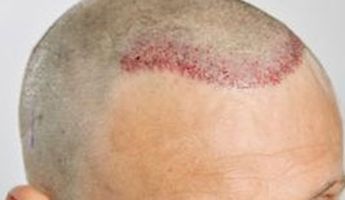
Find the best clinics for Hair Transplant in New York City
With Medijump you can browse 1 facilities offering Hair Transplant procedures in New York City. The cheapest price available is $1,000 in Chicago
Hair Transplant in United States
Price: $ 1,000
Hair Transplant in Chicago
Price: $ 1,000
Hair Transplant in Los Angeles
Price: $ 1,276
Egypt offers the best prices Worldwide
Price: $ 126
New York Center for Facial Plastic & Laser Surgery, located in Manhattan, New York City, United States offers patients Hair Transplant procedures among its total of 39 available procedures, across 4 different specialties. Currently, there's no pricing information for Hair Transplant procedures at New York Center for Facial Plastic & Laser Surgery, as all prices are available on request only, whilst the national average price is approximately $1,138. All procedures and treatments are undertaken by the lead specialist at the Clinic, and they are not accredited by any recognized accreditations institutes
- Home
- United States
- New York City
Compare Before & After Photos of _procedure_photos.phpHair Transplant
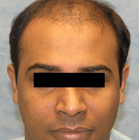
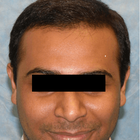
Front view
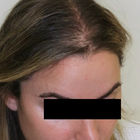
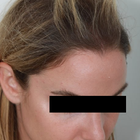
Half-side view
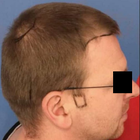
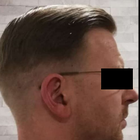
Full-side view
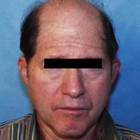
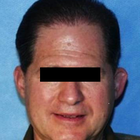
Front view
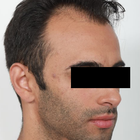
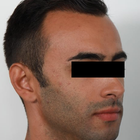
Half-side view
WHY US?
At Medijump, we're making medical easy. You can search, compare, discuss, and book your medical all in one place. We open the door to the best medical providers worldwide, saving you time and energy along the way, and it's all for FREE, no hidden fees, and no price markups guaranteed. So what are you waiting for?

Free

Best Price

Widest Selection

Risk-Free
What you need to know about Hair Transplant in New York City

Hair Transplantation, also known as hair restoration surgery, is the surgical process of moving hair follicles from one part of the body that is rich in hair (known as a donor site) and embedding them at the the bald area of the head (recipient site). The medical course of action that aims at addressing hair loss issues and improving aesthetics. While there are many causes of hair loss, the most common reason, especially for men, is genetics. Hereditary hair loss as men age is the number one leading factor of baldness.
It is a minimally invasive procedure, performed under local anesthetic and is most commonly used to treat male baldness, but the technique can also be used to restore eyelashes, eyebrows, beard hair and to fill in scars. The procedure usually lasts between 4 to 8 hours, depending on the number of grafts needed. This procedure is a long-term solution to hair loss, with most patients experiencing significant improvement in hair growth after six months to a year.
Why do people experience hair loss?
We lose an average of 100 hairs a day, however, these hairs are immediately replaced by new hairs growing at the same time. Hair loss can occur suddenly or gradually and it may affect your scalp or your entire body, depending on what’s causing it. Other causes of hair loss may include:
- Stress - a lot of people may experience hair thinning for several months due to a physical or emotional shock. However, this type of hair loss is only temporary.
- Certain Hairstyles and treatments - hairstyles that pull your hair like tight pigtails, ponytails or braids can actually cause traction alopecia. Permanent hair treatments and hot oil treatment may also lead to hair loss; these hair treatments cause inflammation to the hair follicles. If there is scarring, hair loss may be permanent.
- Radiation Therapy - for example, during cancer treatment.
- Certain medical conditions and hormonal changes - in women, hormonal changes due to pregnancy, childbirth menopause or thyroid problems may cause temporary or permanent hair loss. As for medical conditions, hair loss may be due to alopecia, scalp infections like ringworm or a hair-pulling disorder known as trichotillomania.
Sudden hair loss may also be a sign of a specific medical condition that will require treatment. You will need to consult your doctor if you experience more than your usual hair loss whenever you are combing or washing your hair and also if you encounter a sudden patchy loss of hair.
A hair transplant is a common treatment performed on people who are experiencing baldness due to aging and heredity factors. However, if you are completely bald with absolutely no hair left, then this type of treatment may not be applicable for you, as you won't have sufficient donor hair to supply.
What is the cost of Hair Transplant in New York City?
The cost of Hair Transplant in New York City is typically influenced by various factors. These may include the experience and reputation of the surgeon, the complexity of your case, and the total number of grafts needed. Moreover, the pricing strategy followed by the medical establishment also plays a significant role. Some clinics charge based on the number of grafts transplanted, while others might price the procedure as a package. The exact price can therefore only be determined in consultation with a trusted clinic. While it can appear costly to some, the Hair Transplant is an investment in one's appearance and self-confidence.
What Does The Procedure Involve?
The hair transplant procedure involves taking hair from your Donor Site and transferring it to the area(s) lacking in hair, the Recipient Site, and a local anesthetic will be applied before the procedure begins to limit any discomfort.
There are two main methods used in a hair transplant procedure:
- Follicular Unit Transplantation (FUT) - strips of tissue will be removed from your donor area, these strips will be cut into individual follicular units. Small cuts will be made on your scalp where the follicular unit grafts will be placed. This method is becoming less popular.
- Follicular Unit Extraction (FUE) - individual hair follicles will be directly extracted from your donor area and moved to your recipient site using a specialist microsurgical needle. FUE is now the preferred technique for hair transplants as it will not leave a linear scar at the back of the head.
Procedures are undertaken by a fully qualified technician and usually involve the extraction of around 3,000 grafts, going up to 4,000. Any more, and it will likely require two separate sittings to complete.
How Long Should I Stay in New York City for a Hair Transplant Procedure?
Hair transplants are usually performed as an outpatient procedure. Thus, you will be able to go back to your hotel immediately after. Both methods used for Hair Transplant treatments usually take 4-8 hours to complete. With FUE technique, there are no stitches or staples to be removed, so you won't need to stay in New York City for long after the procedure, just allow a day or two to be sure before traveling home.
You should expect to pay the clinic another visit the day after the treatment so the doctor can remove the bandage, examine the areas of intake and transplantation of follicles, before washing your hair using a special technique that you will learn to perform by yourself. Finally, the doctor will provide you with a special shampoo that will help to restore the skin.
What's the Recovery Time for Hair Transplant Procedures in New York City?
Your scalp will continue to be sensitive to pain for a few days, during which time you should continue to take the medications provided by the doctor. On top of the pain killers and anti-inflammatory meds, you may also be given antibiotics to lessen the risk of infection, as uncommon as this may be.
You should expect to return to work and your daily routine, including exercise, after 5 days. However, the signs of a hair transplant will remain for at least another 2-3 weeks, at which point the newly transplanted hairs will start to fall out - but don't be alarmed! This is to be expected as you've just had a follicle extraction, so dead hair will simply make way for new hair over the coming weeks and months.
If the average person's hair only grows at a centimeter per month, then it will take some time before you can wear your hair long again. You could expect to display short and consistent hair just 4-6 weeks after the treatment.
What sort of Aftercare is Required for Hair Transplant Procedures in New York City?
After the procedure is complete, anti-swelling medication and painkillers will be available and you'll be provided with various essentials to see you through the days immediately following. Post-op items may include; specialist shampoo, lotion, multivitamins, a special hat, a headband, neck pillow, and wound dressing.
Having already been provided with your post-op aftercare products, you may also be offered Platelet Rich Plasma (PRP) Therapy to help stimulate the hair follicles and encourage hair growth. This is where a small amount of blood is taken, rich in plasma, which is then injected into the Recipient Site.
What's the Success Rate of Hair Transplant Procedures in New York City?
The success rate for hair transplants is one of the highest, at 98% and is considered the only truly effective remedy for hair loss.
The effectiveness of Hair Transplant treatments is significantly shaped by the surgeon's expertise who executes the process. A seasoned and competent surgeon employs sophisticated methods to prevent harm to the transplanted hair follicles during the process, which leads to a higher likelihood of success. Additionally, the ability of the surgeon to place the grafts in an attractive manner that resembles natural hair growth further enhances the perceived successfulness of the result.
Beyond the competency of the surgeon, the overall health status and lifestyle choices of the patient greatly impact the treatment's effectiveness. Subpar habits such as excessive smoking and alcohol intake can obstruct the recovery process and influence the result adversely. Illnesses like diabetes can also interfere with the likelihood of success.
Consideration of the donor hair's quality is another aspect that may affect the success of the procedure. Generally, those with robust, plentiful hair in the donor region have a higher success rate as compared to individuals with sparse or poor-quality hair. The availability of more follicles for transplantation yields better results. A detailed examination is carried out before the Hair Transplant to verify the quantity and quality of the donor's hair.
Are there Alternatives to a Hair Transplant?
Laser therapy is one alternative to a hair transplant. During this procedure, a low-level laser device will be used as a treatment for a hair loss specifically caused by genetics. This low-level laser with a wavelength of 650 nanometres can actually stimulate your hair growth. However, long term effects for this type of alternative still remains uncertain.
PRP Therapy is another alternative you can consider. This type of treatment will make use of your own blood to promote hair growth. Your blood will be spun in a centrifuge to separate your blood’s plasma component from your red and white blood cells. Plasma contains many growth factors that promote hair growth when injected into the scalp.
Other non-surgical alternatives could include simply shaving all your hair off, trying other hairstyles or using a wig or hairpiece.
How do FUT and FUE Compare?
The two most common techniques used are the Follicular Unit Transplant (FUT) and the Follicular Unit Extraction (FUE). How do they compare?
1. FUT, also referred to as FUSS (Follicular Unit Strip Surgery), involves the removal of a strip of skin from the back of the head containing lots of hair follicles, which is stitched up and hidden by the surrounding hair. Then the strip of follicles is divided into 500-2,000 tiny grafts containing just a few hairs. These are then embedded across the bald area of the head.
2. FUE does not require a strip of skin to be removed, instead, the hair follicles are individually removed from the donor site and positioned across the bald area in tiny slits created by a scalpel or needle.
What are the Risks Associated with Hair Transplant?
Like any surgical procedure, Hair Transplant carries certain risks, although they are relatively rare and usually minor if performed by a skilled and experienced surgeon.
Some potential risks and side effects could include:
- Scarring is the most common side effect (only applicable to FUT)
- Infections
- Temporary loss of sensation around the surgical sites
- Inflammation of hair follicles (folliculitis)
- Temporary scalp pain, itching, and swelling.
- Unnatural-looking hair growth
Whilst the information presented here has been accurately sourced and verified by a medical professional for its accuracy, it is still advised to consult with your doctor before pursuing a medical treatment at one of the listed medical providers
No Time?
Tell us what you're looking for and we'll reachout to the top clinics all at once
Enquire Now

Popular Procedures in New York City
Prices Start From $153

Prices Start From $500

Prices Start From $4

Prices Start From $500

Recommended Medical Centers in New York City for Hair Transplant

- Interpreter services
- Translation service
- Religious facilities
- Medical records transfer
- Medical travel insurance
- Health insurance coordination
- TV in the room
- Safe in the room
- Phone in the room
- Private rooms for patients available

- Interpreter services
- Translation service
- Religious facilities
- Medical records transfer
- Medical travel insurance
- Health insurance coordination
- TV in the room
- Safe in the room
- Phone in the room
- Private rooms for patients available

- Interpreter services
- Translation service
- Religious facilities
- Medical records transfer
- Medical travel insurance
- Health insurance coordination
- TV in the room
- Safe in the room
- Phone in the room
- Private rooms for patients available

- Interpreter services
- Translation service
- Religious facilities
- Medical records transfer
- Medical travel insurance
- Health insurance coordination
- TV in the room
- Safe in the room
- Phone in the room
- Private rooms for patients available

- Interpreter services
- Translation service
- Religious facilities
- Medical records transfer
- Medical travel insurance
- Health insurance coordination
- TV in the room
- Safe in the room
- Phone in the room
- Private rooms for patients available

- Interpreter services
- Translation service
- Religious facilities
- Medical records transfer
- Medical travel insurance
- Health insurance coordination
- TV in the room
- Safe in the room
- Phone in the room
- Private rooms for patients available

- Interpreter services
- Translation service
- Religious facilities
- Medical records transfer
- Medical travel insurance
- Health insurance coordination
- TV in the room
- Safe in the room
- Phone in the room
- Private rooms for patients available

- Interpreter services
- Translation service
- Religious facilities
- Medical records transfer
- Medical travel insurance
- Health insurance coordination
- TV in the room
- Safe in the room
- Phone in the room
- Private rooms for patients available

- Interpreter services
- Translation service
- Religious facilities
- Medical records transfer
- Medical travel insurance
- Health insurance coordination
- TV in the room
- Safe in the room
- Phone in the room
- Private rooms for patients available

- Interpreter services
- Translation service
- Religious facilities
- Medical records transfer
- Medical travel insurance
- Health insurance coordination
- TV in the room
- Safe in the room
- Phone in the room
- Private rooms for patients available
Hair Transplant in and around New York City
About New York
New York City, or simply New York (NY), is the most populous city in the United States with an estimated population of over 8 million. The city is labeled as the cultural, financial, and media capital of the world. It is an important center of international diplomacy since it houses the headquarters of the United Nations. The city has been attracting tourists from all around the globe for its architectural beauty, dining spots, and arts. Fueled by its global popularity and superior healthcare, the city also welcomes patients from many other countries to undergo cosmetic surgeries and complex or rare procedures that are not available in the patient’s home country. The medical professionals are highly qualified, skilled, and experienced. The medical costs might not be the cheapest, but patients will get the best treatment in the world.
Popular Areas in New York
New York offers its visitors a myriad of attractions to see and things to do. Tourists can find world-famous sites in almost every corner. The following are the most popular places in the city.
- Statue of Liberty is a symbol of freedom and democracy. It was a gift from the French people to the people of the United States as a monument of international friendship during the American Revolution. This famous statue was designed by French sculptor Frédéric Auguste Bartholdi, and the metal framework was built by Gustave Eiffel. Tourists can access the pedestal and the crown. Although the climb to the top is strenuous, the view from Lady Liberty’s crown is breathtaking, making it one of the most rewarding experiences of your trip to NYC. To get to the statue, you need to take a ferry from Battery Park City or New Jersey. There is only one official ferry company that is allowed to take you to the islands, Statue Cruises.
- Staten Island Ferry offers a stunning landscape of New York City and the Statue of Liberty. The ferry runs frequently and is free. Tourists can enjoy the refreshing breeze while admiring Governors Island, the Brooklyn Bridge, lower Manhattan and Wall Street’s skyscrapers, Ellis Island, the Statue of Liberty, and the Verrazano-Narrows Bridge.
- Empire State Building is perhaps the most iconic symbol of New York City. This magnificent landmark should not be missed by any visitors. The building was opened during the Great Depression in 1931 and tourists can see its Art Deco style in the architecture. The view from its 86th and 102nd floors is spectacular, especially around sunset time.
- Central Park is 843 acres of open space and is a good place to escape from the concrete jungle of New York City. The park was designed by Frederick Law Olmsted and Calvert Vaux, and it was the first major landscaped public park in the United States. Tourists can wander around the park, enjoy a picnic, visit a memorial to John Lennon, or interact with animals in the Zoo.
Weather and Climate in New York
New York City has four seasons, each with its own perks, which makes the city a year-round destination.
- Spring starts in March and ends in April. The city enjoys a pleasant temperature during this season. It is one of the most beautiful times to visit since the city is filled with Cherry Blossoms and hosts a number of festivals. However, expect to experience seasonal storms.
- Summer is from June to August. The temperatures are mostly warm, with an average between 25 °C to 30 °C. The city is usually crowded and busy during this season, but tourists can enjoy several free summer concerts.
- Autumn is a great time to visit New York City, which lasts from September to November. The summer heat will be replaced with a cooler temperature, and the city is overflowing with red and orange leaves.
- Winter in the city can be freezing and sometimes snowy. The season starts in December and ends in February. The temperatures can drop as low as -25 °C. If you plan to visit during winter, make sure to dress properly.
Getting Around in New York
The primary international airport in New York City is the John F. Kennedy International Airport. More than ninety airlines operate from this airport, including several budget airlines such as JetBlue. Getting around the city is fairly easy and inexpensive, especially by public transportation. The city has 27 subway lines stopping at 472 stations and more than 5,000 buses. To ride the subway, you will need to purchase a MetroCard that cost $1. The fares are $2.75 per trip and you can buy a one week unlimited MetroCard for $33 or an unlimited monthly MetroCard for $127.
The bus will take you to many places including the east or west portions of Manhattan. The bus fares are $2.75 per trip and the buses only accept MetroCard or exact fare in coins. If you do not want the hassle to figure out the public transportation system, the iconic yellow taxis are widely available. You can flag them down directly from the streets. The taxis are green in Brooklyn and Uber and Lyft are also available.
Tourists Visas in New York
Citizens of Canada, Marshall Islands, Micronesia, Palau, and Bermuda are given visa exemption access. Holders of passports issued by 38 countries including Australia, Singapore, and the United Kingdom are selected for the Visa Waiver Program. Nationals from countries that are not listed in the visa exemption and visa waiver program need to apply for a visa. All visitors may stay for a maximum of 90 days. It is advisable to learn more about the visa policy at your nearest United States Embassy.
Additional Information
- Local Currency: US dollar ($) is the official currency. Please check XE.com for the current exchange rate to your local currency.
- Money & Payments: ATMs can be found everywhere, and credit cards are accepted at most hotels, restaurants, and shops. Tipping is not optional. For restaurant servers and bartenders, 15% - 20% of the bill is acceptable.
- Local Language: The main language in New York City is English. However, there are over 800 languages spoken in the city, such as Spanish and Chinese.
- Local Culture and Religion: Christianity is the major religion in New York City, followed by Judaism, Islam, Buddha, and Hindu.
- Public Holidays: New York City celebrates various holidays, including New Year, Martin Luther King Jr Day, Independence Day, Thanksgiving Day, and Christmas Day.
Popular Searches
- Plastic Surgery in Thailand
- Dental Implants in Thailand
- Hair Transplant in Thailand
- Breast Augmentation Thailand
- Gastric Sleeve in Thailand
- Gender Reassignment Surgery in Thailand
- Laser Hair Removal in Bangkok
- Botox in Bangkok
- Dermatology in Bangkok
- Breast Augmentation in Bangkok
- Coolsculpting in Bangkok
- Veneers in Turkey
- Hair Transplant in Turkey
- Rhinoplasty in Turkey
- Stem Cell Therapy in Mexico
- Rhinoplasty in Mexico
- Liposuction in Mexico
- Coolsculpting in Tijuana
- Rhinoplasty in Korea
- Scar Removal in Korea
- Gastric Sleeve in Turkey
- Bone Marrow Transplant in India
- Invisalign in Malaysia
- Plastic Surgery in the Dominican Republic
- Tummy Tuck in the Dominican Republic
- Plastic and Cosmetic Surgery in Poland
- Rhinoplasty in Poland
- Hair Implant in Poland
- Dental Implants in Poland
- IVF in Turkey
